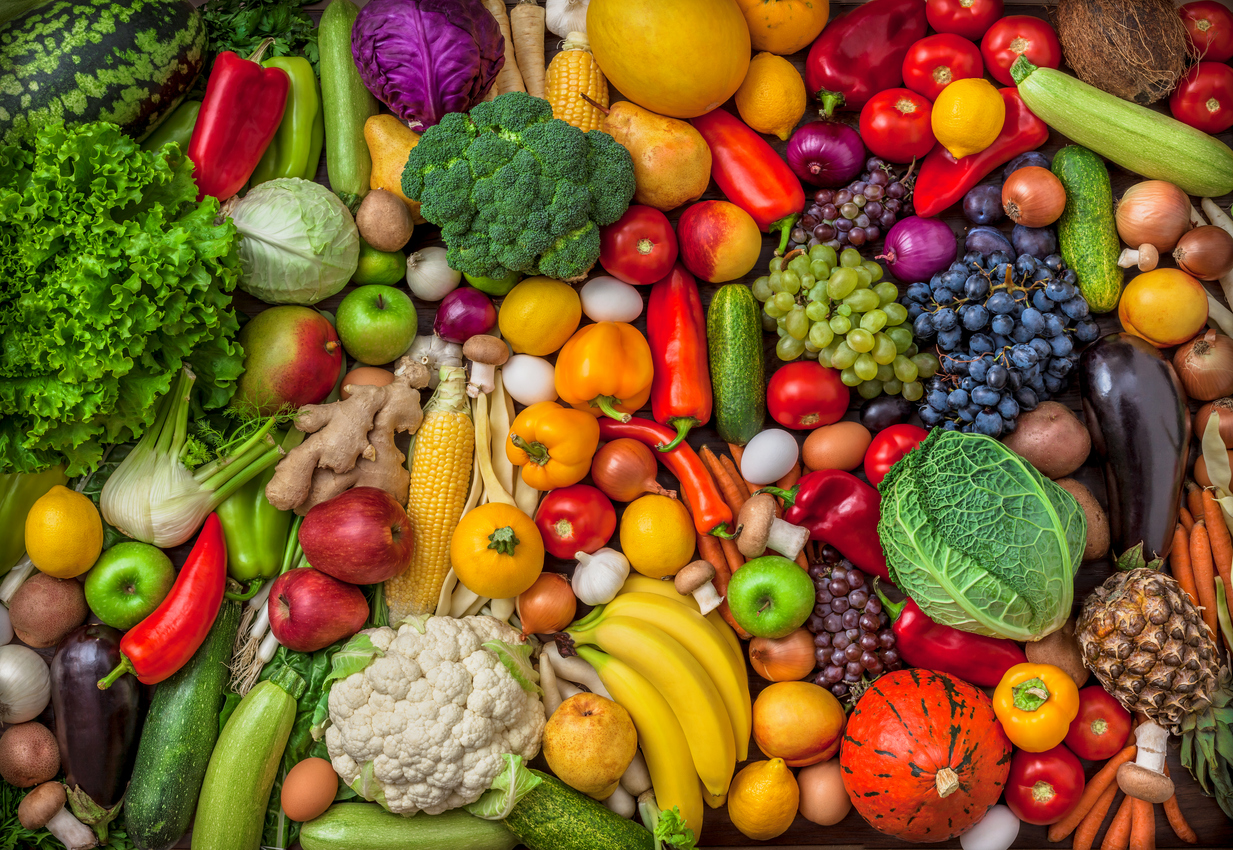Biotechnology’s role in combating global food waste – Genetic Literacy Project

Global Food Waste: A Critical Challenge to Sustainable Development Goals
A significant paradox impedes progress towards global sustainability: while a substantial portion of the global population faces food insecurity, an estimated one-third of all food produced is lost or wasted. This issue directly contravenes the objectives of several Sustainable Development Goals (SDGs), most notably SDG 2 (Zero Hunger) and SDG 12 (Responsible Consumption and Production). The squandering of food represents a systemic failure, wasting critical resources such as water, labor, and energy, and undermining efforts to establish equitable and sustainable food systems.
Scale of the Global Food Waste Problem
Data from the United Nations Environment Programme (UNEP) highlights the magnitude of the challenge. In 2022, global food waste across retail, food service, and household sectors reached approximately 1.05 billion tonnes. This waste has significant implications for achieving SDG Target 12.3, which aims to halve per capita global food waste by 2030.
- Total Annual Waste: 1.05 billion tonnes.
- Per Capita Waste: An average of 132 kilograms per person annually.
- Household Contribution: Households are the largest source, accounting for 79 kilograms per capita.
- Supply Chain Losses: An additional 13% of the world’s food is lost between harvest and retail, further compounding the problem.
Environmental Impact and a Threat to Climate Action (SDG 13)
Food loss and waste are significant contributors to climate change, generating 8 to 10 percent of global greenhouse gas emissions. This environmental impact directly undermines SDG 13 (Climate Action). The decomposition of organic waste in landfills releases methane, a potent greenhouse gas. This process fuels a detrimental cycle where climate change leads to extreme weather events, such as droughts and floods, which in turn disrupt agricultural production, reduce crop yields, and threaten global food security, creating further obstacles to achieving SDG 2.
The Role of Agricultural Biotechnology in Achieving SDG Targets
Agricultural biotechnology, including the development of genetically modified (GM) crops, offers a suite of powerful tools to address food loss and waste across the entire supply chain. By enhancing crop resilience and quality, these innovations contribute directly to the targets outlined in SDG 2, SDG 12, and SDG 13.
Strategies for Reducing Food Loss and Waste
-
Insect-Resistant Crops
Insect-resistant crops, such as those incorporating Bt (Bacillus thuringiensis) technology, directly reduce pre-harvest food loss, a critical component of SDG Target 12.3. By providing inherent protection against pests, these crops ensure a higher percentage of the harvest is viable and marketable.
- Contribution to SDG 2: Increases the quantity of available food by preventing crop destruction in the field.
- Contribution to SDG 12: Reduces food losses along production chains and minimizes the need for chemical pesticide applications, promoting sustainable agriculture.
- Contribution to SDG 15 (Life on Land): Lower pesticide use helps protect biodiversity and terrestrial ecosystems.
-
Non-Browning and Reduced Bruising Crops
Biotech crops engineered to resist browning and bruising, such as the Innate® potato, address a major cause of food waste at the retail and consumer levels. By preventing cosmetic damage that leads to rejection, these crops ensure that perfectly edible produce is not discarded. This directly supports the goal of reducing consumer-level waste under SDG 12.
-
Delayed Ripening Crops
Crops with delayed ripening characteristics extend the shelf life of perishable produce. By slowing the natural ripening process, this technology allows more time for transportation and distribution, significantly reducing spoilage between the farm and the consumer. This is a key intervention for minimizing post-harvest losses and strengthening food supply chains, in line with SDG 12.
-
Drought and Salinity Tolerant Crops
In the face of climate change, building resilience in agriculture is paramount for achieving SDG 13. Drought and salinity tolerant crops are engineered to withstand abiotic stresses that cause widespread crop failure. By ensuring stable yields in hostile environmental conditions, these crops prevent massive pre-harvest food losses and enhance the resilience of our food systems, securing food availability as mandated by SDG 2.
Conclusion: Integrating Biotechnology for a Sustainable Future
Biotechnology offers targeted solutions to the multifaceted problem of food loss and waste. By enhancing crop protection, extending freshness, and building resilience to climate-related stresses, these technologies are indispensable tools for achieving a nexus of Sustainable Development Goals. Their contribution is vital for creating more efficient, sustainable, and equitable food systems that can effectively nourish a growing global population while protecting planetary health. Greater recognition and integration of these innovations are essential for advancing the 2030 Agenda for Sustainable Development.
Analysis of Sustainable Development Goals in the Article
1. Which SDGs are addressed or connected to the issues highlighted in the article?
- SDG 2: Zero Hunger: The article directly addresses the paradox of hunger coexisting with massive food waste. It discusses how biotech crops can enhance food security by preventing crop loss, thereby increasing the availability of food.
- SDG 12: Responsible Consumption and Production: This is a central theme of the article. It quantifies global food waste at consumer and retail levels and food loss along the supply chain, and it proposes biotech crops as a solution to achieve more sustainable production patterns by reducing this waste.
- SDG 13: Climate Action: The article explicitly links food loss and waste to climate change, stating that it generates 8-10% of global greenhouse gas emissions. By reducing food waste, the proposed solutions contribute directly to climate change mitigation.
- SDG 9: Industry, Innovation, and Infrastructure: The article highlights the role of scientific innovation, specifically biotech crops (GM crops), as a technological solution to the problem of food waste. It presents genetic engineering and gene editing as key tools for building a more resilient and sustainable agricultural sector.
2. What specific targets under those SDGs can be identified based on the article’s content?
-
Under SDG 2 (Zero Hunger):
- Target 2.4: By 2030, ensure sustainable food production systems and implement resilient agricultural practices that increase productivity and production, that help maintain ecosystems, that strengthen capacity for adaptation to climate change, extreme weather, drought, flooding and other disasters and that progressively improve land and soil quality. The article supports this target by describing how drought-tolerant, salinity-tolerant, and insect-resistant biotech crops create more resilient agricultural systems that can withstand environmental stresses and pests, preventing crop failure and ensuring stable yields.
-
Under SDG 12 (Responsible Consumption and Production):
- Target 12.3: By 2030, halve per capita global food waste at the retail and consumer levels and reduce food losses along production and supply chains, including post-harvest losses. The article is built around this target, providing specific data from UNEP on the scale of the problem (1.05 billion tonnes wasted in 2022) and detailing how biotech solutions like non-browning crops and delayed-ripening crops can directly reduce waste at retail, consumer, and post-harvest stages.
-
Under SDG 13 (Climate Action):
- Target 13.2: Integrate climate change measures into national policies, strategies and planning. The article provides a strong rationale for this by quantifying the climate impact of food waste (“8 to 10 percent of the world’s greenhouse gas emissions”). Promoting technologies that reduce food waste, as the article suggests, is a direct strategy for mitigating climate change.
-
Under SDG 9 (Industry, Innovation, and Infrastructure):
- Target 9.5: Enhance scientific research, upgrade the technological capabilities of industrial sectors in all countries, in particular developing countries, including, by 2030, encouraging innovation. The article champions biotech crops as a “scientific innovation” and an “indispensable tool” for making food systems more sustainable. It describes specific technologies like Bt crops, non-browning potatoes, and delayed ripening crops as examples of technological upgrades in the agricultural sector.
3. Are there any indicators mentioned or implied in the article that can be used to measure progress towards the identified targets?
-
For Target 12.3:
- Indicator 12.3.1 (a) Food Loss Index and (b) Food Waste Index: The article provides explicit data points that align directly with these indicators. It states that “global food wastage reached approximately 1.05 billion tonnes in 2022,” which corresponds to the Food Waste Index. It also specifies that “13% of the world’s food supply that is lost during handling and processing before it even reaches the retail stage,” which relates to the Food Loss Index. The per capita figures (“132 kilograms of food waste for every person” and “79 kilograms per capita” at the household level) are also direct measures for this indicator.
-
For Target 2.4:
- Implied Indicator: Reduction in pre-harvest crop losses due to pests and abiotic stress. The article implies this indicator by stating that stresses like drought and salinity can cause crop losses “exceeding 50% for major crops globally.” The effectiveness of drought-tolerant and insect-resistant crops could be measured by the reduction in these percentage losses, demonstrating increased resilience and productivity.
-
For Target 13.2:
- Implied Indicator: Percentage of total greenhouse gas emissions from the agriculture/waste sector. The article provides a baseline for this indicator by stating that food loss and waste generate “8 to 10 percent of the world’s greenhouse gas emissions.” Progress could be measured by a reduction in this percentage as food waste is curtailed.
4. Create a table with three columns titled ‘SDGs, Targets and Indicators” to present the findings from analyzing the article.
| SDGs | Targets | Indicators |
|---|---|---|
| SDG 2: Zero Hunger | Target 2.4: Ensure sustainable food production systems and implement resilient agricultural practices. | Implied: Reduction in pre-harvest crop losses. (Article mentions biotech crops mitigate losses that can exceed 50% from drought and salinity). |
| SDG 12: Responsible Consumption and Production | Target 12.3: Halve per capita global food waste and reduce food losses along production and supply chains. |
Explicit (Indicator 12.3.1):
|
| SDG 13: Climate Action | Target 13.2: Integrate climate change measures into policies and planning. | Implied: Percentage of global greenhouse gas emissions from food loss and waste. (Article states this is currently 8-10%). |
| SDG 9: Industry, Innovation, and Infrastructure | Target 9.5: Enhance scientific research and upgrade technological capabilities to encourage innovation. | Implied: Adoption rate of innovative agricultural technologies. (Article presents biotech crops like insect-resistant, non-browning, and delayed-ripening varieties as key innovations). |
Source: geneticliteracyproject.org
What is Your Reaction?
 Like
0
Like
0
 Dislike
0
Dislike
0
 Love
0
Love
0
 Funny
0
Funny
0
 Angry
0
Angry
0
 Sad
0
Sad
0
 Wow
0
Wow
0
















































:focal(1500,1000)/https://media.globalcitizen.org/a6/9a/a69a4720-d8a1-4715-b596-18738d03c05c/rotary_polio_hero_image.jpg?#)







/countries/sri-lanka/photo-credit---dmc-sri-lanka.tmb-1200v.jpg?sfvrsn=dc298bcc_1#)




















